Sewer polymer hatches: types and characteristics + features of use
Practical sewer polymer hatches, despite the fact that they were introduced to consumers relatively recently, have already gained popularity, as they are able to effectively cope with all the necessary tasks. In addition, they have a fairly attractive appearance and affordable cost.
But in many respects the final result depends on the correct choice, therefore, it is necessary to know the basic performance characteristics of polymer products. In this article, we consider in more detail the features of plastic covers, the main types, marking features and recommendations for their use.
The content of the article:
Purpose and types of hatches
Hatches made of polymer materials are in demand no less than their cast-iron counterparts. Moreover, in some cases, it is polymer products that are most suitable. For example, for arrangement of a sewer well in the country.
Regardless of the appearance, weight, shape, color and other characteristics, all of the specified equipment is designed to solve the same problems, which include:
- ensuring the safety of the movement of pedestrians and any vehicles - that is, with the help of hatches, injuries and accidents should be excluded;
- protection of engineering communications elements, wells, in which they are located from clogging, damage by objects that have got inside;
- prevention of theft of parts of utilities, hatches themselves.
The appearance of the product also plays an important role - most buyers select polymer covers with high aesthetic properties.
As for the manufacturing material used in the production of plastic sewer manholes, it is represented by several types of polyethylene:
- secondary high pressure;
- low pressure containing modifying additives.
Hatches are made by pressing the components heated to 300 ° С.

In addition to plastic, to the category of polymer hatches can be attributed products, which include other additives. It is polymer sand, rubber and composite.
The composition of polymer-sand products includes 70% of clean and dry sand, and the remaining 30 - plastic LDPE and HDPE. This composition provides the finished lid with good strength, resistance to aggressive substances and temperature extremes.
They are also made by hot pressing at temperatures above 100 degrees.
The rubber is reinforced with nylon thread and wear-resistant sewer covers are made from these materials.
A composite or premix is a mixture of polyester resin, fiberglass, calcite and other additives used according to the manufacturer’s recipe.
We wrote more about materials for manufacturing hatches and their features. here.
Features of plastic hatches
Hatches are made to solve the same global problems, but there are many of their subspecies, which affects their design features, strength, cost and a number of other characteristics.
As a result, polymer products begin to be divided into varieties, which are affected by: functional purpose and dimensions.
Functional Application and Dimensions
So according to the relevant GOST there are the following varieties of polymer products:
- Lightweight compact hatch, abbreviated as it is called LM;
- Light hatch or just L.
Most often, the first category of products has to be dealt to the owners of private houses, plots on which communications are laid, they are met by visitors to parks. The reason is that lightweight, compact small-sized hatches are designed for pedestrian and green areas.

They meet the requirements of the load class A15, and this indicates that they are able to withstand the weight of even a truck. But nevertheless, if it will be one-time assaults, and not system ones, and for a long time.
According to GOST, any such hatch must:
- withstand at least 1,500 kg of load or 15 kN;
- have a diameter of 450 mm.
The landing depth in the shell should not be less than 20 mm, this is necessary in order to exclude the possibility of the hatch spontaneously leaving its seat under some unusual circumstances, for example, from a gust of strong wind.
The light hatch is designed to solve the same problems as its light compact analogue. But it has a larger diameter - from 550 mm.
From various sources, information can be drawn that polymer hatches can withstand much greater loads than indicated above.
Perhaps this is so, but the profile GOST in the section on the materials of covers and hatch cases contains requirements stating that plastic can be used for the manufacture of only the above products.
The list of materials from which hatches can be made includes cast iron, the same metal, but with concrete inserts and polymers. That is the test about the sand fastened by plastic in state standard specification nothing is said.
As a result, the use of any plastic hatches will not be entirely legal and may result in sanctions, especially in the event that some kind of accident occurs because of them.
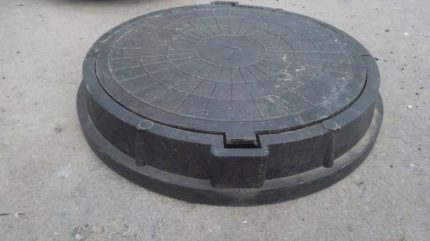
The above is also true for polymer-sand products. As for composite covers, they, according to sellers and manufacturers, can withstand an impressive 25 tons of load.
And this statement is true. True, their cost is higher than plastic analogues.
Regardless of the variety, each cover should have a relief with an area of 10-70% of the entire surface. In addition, all of them must freely enter the enclosures. In this case, the gap between both parts of the structure should not exceed 3 mm.
And hatches should fit snugly against the supporting parts of their hulls. So the tolerance should not exceed 2 mm.
Nuances of marking polymer hatches
Each polymer product can belong not only to the category of hatches, but also to other products. For example, to be a rain-sink, a repair insert.
And so that the lining fraught with negative consequences does not come out, each similar product should be marked by the manufacturer.
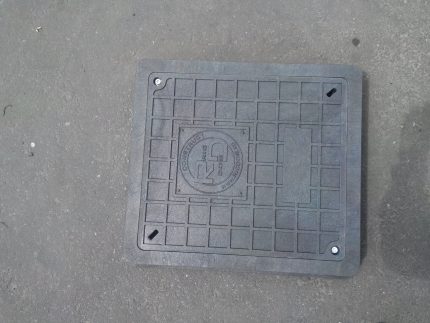
That is, according to the current GOST, the word is indicated on the cases, covers:
- "Luke";
- "Storm water inlet";
- "insert".
Confirm such information should be the brand of the manufacturer. It is also important that you cannot mix parts for various purposes.
In addition, the date of manufacture should be on each hatch. Since the polymer has an expiration date (usually 20 years), after which it begins to noticeably lose its qualities, and the accompanying documents are unlikely to be preserved during this time, the requirements of GOST at this point are quite stringent.
Therefore, without the stigma with the month and year of manufacture, the hatch will be non-standard.
Shape and dimensions of covers
In addition, the division of plastic products can be carried out according to a number of signs.
Which include:
- the form;
- sizes
- the availability of additional equipment;
- decorative qualities.
So on sale you can find plastic equipment having different shapes - round, square, rectangular.
Although the industry is ready to supply anything, it should be remembered that according to the rules set out in GOST, only round hatches are considered standard.
The reason is that they are the safest. So the specified form will not allow the product to fall down, and not in one position, better withstand some types of load.

All other subspecies are not prohibited, but it is advisable to use them exclusively in places where they cannot lead to injuries or other troubles.
Dimensions of round plastic hatches for sewer and other wells are listed in GOST (they are indicated above). In all other cases, manufacturers act at their discretion, since the dimensions of square and other products are not regulated.
But there is a practice when the length of the sides is from 30 cm to a meter, while the pitch is usually equal to 50 mm.
Availability of additional equipment
Polymer products can be standard or equipped with various devices for solving some problems.
So for additional equipment may include:
- constipation, which prevent the demolition of hatches by the wind, the displacement of the wheels of a car;
- locksexcluding vandal, illegal actions, for example, theft.
In addition, hatches are often equipped with dismantling holes to prevent the accumulation of gases and other equipment.

Decorative qualities of products
Manufacturers, taking into account the tastes of different categories of consumers, supply products with high aesthetic qualities to the market.
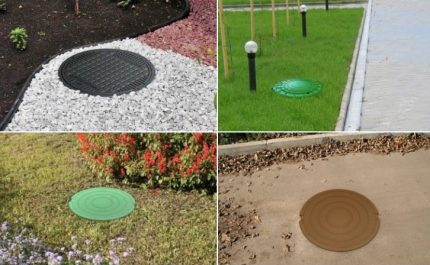
Which provide:
- Color selection. Today, the plastic cover of any sewer or other type of hatch can shine with almost all the colors of the rainbow. That allows you to present such a product in a favorable light or to disguise it.
- Corrugation Pattern, Font Type. GOST allows manufacturers to choose the design of the manhole cover, which together with the color gives a positive effect and variety.
Modern polymers are not affected by temperatures, their differences, do not fade, and also do not exfoliate. Which significantly increases the decorative qualities of the covers and maintains their appearance in its original condition for several decades.
So, a practical lid made of a polymer material will fulfill its purpose for decades, closing manhole or plastic sewer well, or another well in the country house, in which utilities are located, and after 20 years you can buy a new one and, thanks to its light weight, it is easy to replace it with your own hands.
Conclusions and useful video on the topic
The roller below will allow you to better understand the capabilities of polymer hatches. By the way, it is worth paying attention to checking the product under pressure, since according to the relevant GOST the procedure must be carried out before sale.
Polymer hatches are modern and quite practical products that can make the life of users more comfortable. In addition, they have high performance, durability and affordable cost..
But their capabilities, in comparison with cast-iron counterparts, are still limited. Therefore, when choosing, you should be vigilant and not overestimate their capabilities so as not to incur financial losses.
Choose a plastic hatch for arranging a sewer well in the country and want to clarify a couple of points of your choice? Ask your questions under this publication - our experts and other site visitors will try to help you.
Or maybe you recently purchased polymer roofs, installed them yourself and now want to share experience with newcomers in this matter? Tell us about the models you have chosen for your needs, add photos of installed hatches below under our article.

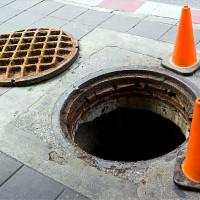 Sewer manholes: a review of species, their sizes and classification + what to look for when choosing
Sewer manholes: a review of species, their sizes and classification + what to look for when choosing 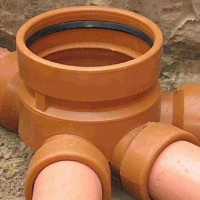 Sewer pipes PVC and HDPE for outdoor sewage: types, characteristics, advantages and disadvantages
Sewer pipes PVC and HDPE for outdoor sewage: types, characteristics, advantages and disadvantages 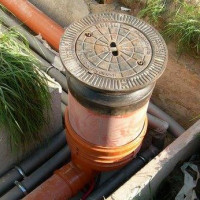 Plastic sewer wells: varieties + installation features
Plastic sewer wells: varieties + installation features 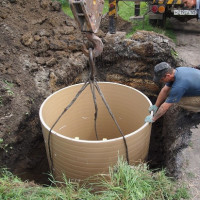 Viewing wells for drainage: types, arrangement and installation features
Viewing wells for drainage: types, arrangement and installation features 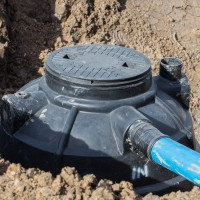 Sewer wells: full classification and examples of arrangement
Sewer wells: full classification and examples of arrangement 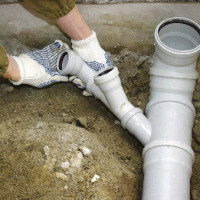 How to lay sewer pipes in a private house: schemes and rules for laying + installation steps
How to lay sewer pipes in a private house: schemes and rules for laying + installation steps  How much does it cost to connect gas to a private house: the price of organizing gas supply
How much does it cost to connect gas to a private house: the price of organizing gas supply  The best washing machines with dryer: model rating and customer tips
The best washing machines with dryer: model rating and customer tips  What is the color temperature of light and the nuances of choosing the temperature of the lamps to suit your needs
What is the color temperature of light and the nuances of choosing the temperature of the lamps to suit your needs  Replacement of a geyser in an apartment: replacement paperwork + basic norms and requirements
Replacement of a geyser in an apartment: replacement paperwork + basic norms and requirements
As for me, the only advantage of plastic hatches is their light weight. I don’t even consider the variety of colors to be a special advantage, because the cast-iron hatch can be painted in the end. I always liked cast-iron hatches, they are so authentic, there is something in them that attracts more. But lately, more and more often I come across precisely plastic options. And all because pig-iron to this day mercilessly drag everyone who is not lazy. Apparently, plastic everywhere and everywhere - our future, alas (((
If we talk about the use of such hatches for private areas, then a small weight is not a minus, but a very plus. I bought a polymer sewer hatch for a drain hole in my country house. So far, only the first year is worth it, so I won’t make any plans, but now I haven’t noticed any minuses at all. Well, the fact that plastic is used everywhere - so what's the difference if the quality matches?
We have 2 large pits behind the house, they are very deep, like wells. They were closed all the time with iron hatches, but recently these hatches began to steal. The street is poorly lit and now the pits are open. Zheku does not care. I wrote a statement, no use. And the children walk, no matter what happens. So I think on my own initiative to buy a polymer hatch and close the hole. Do you think it will be reliable enough? If the car passes, it will not crack?
Perfect solution. The polymer sunroof is not only inexpensive (600-800 rubles) in comparison with cast iron (from 3,500 rubles), but also quite reliable. Even the simplest polymer sunroof can withstand loads of at least 1.5 tons. There are models that can withstand up to 30 tons. I recommend that you purchase a reinforced hatch that can withstand a load of at least 3 tons. Such a product will contain the marking LMU or L. The recommended size of the hatch is 750 * 110.